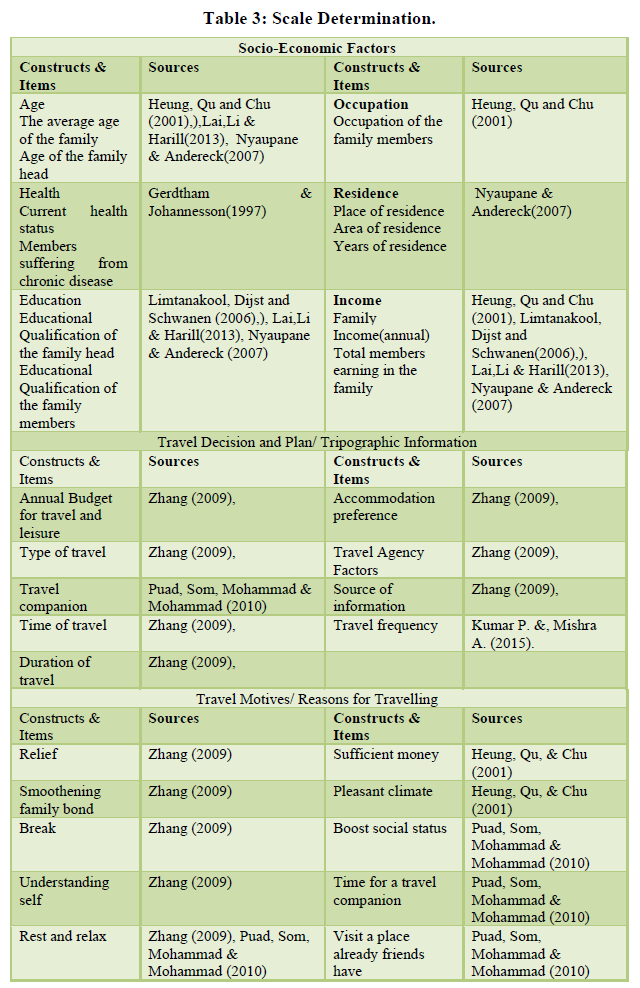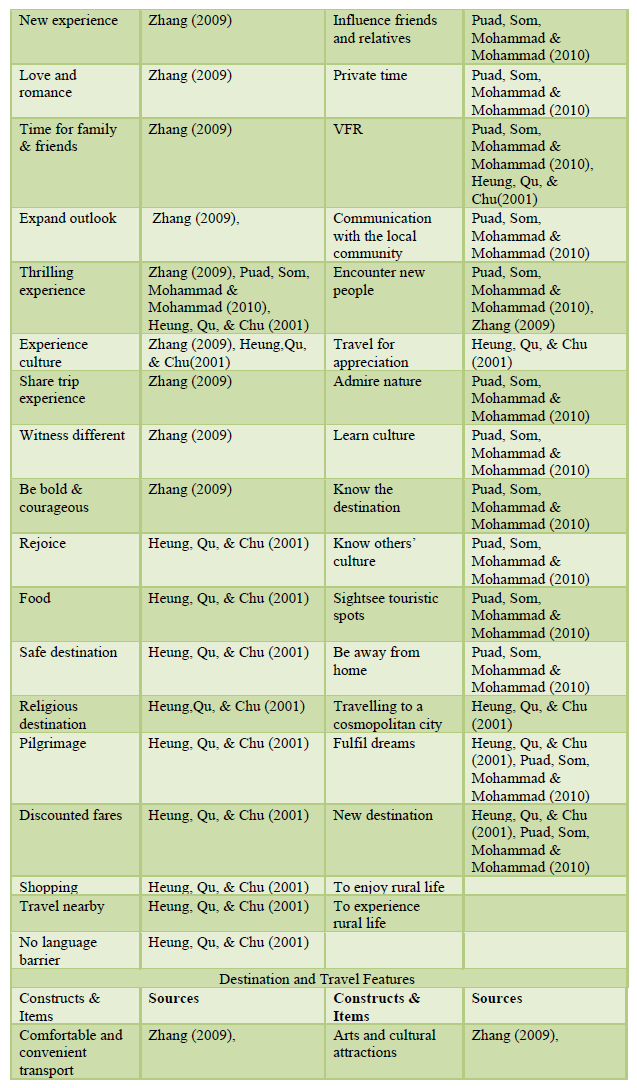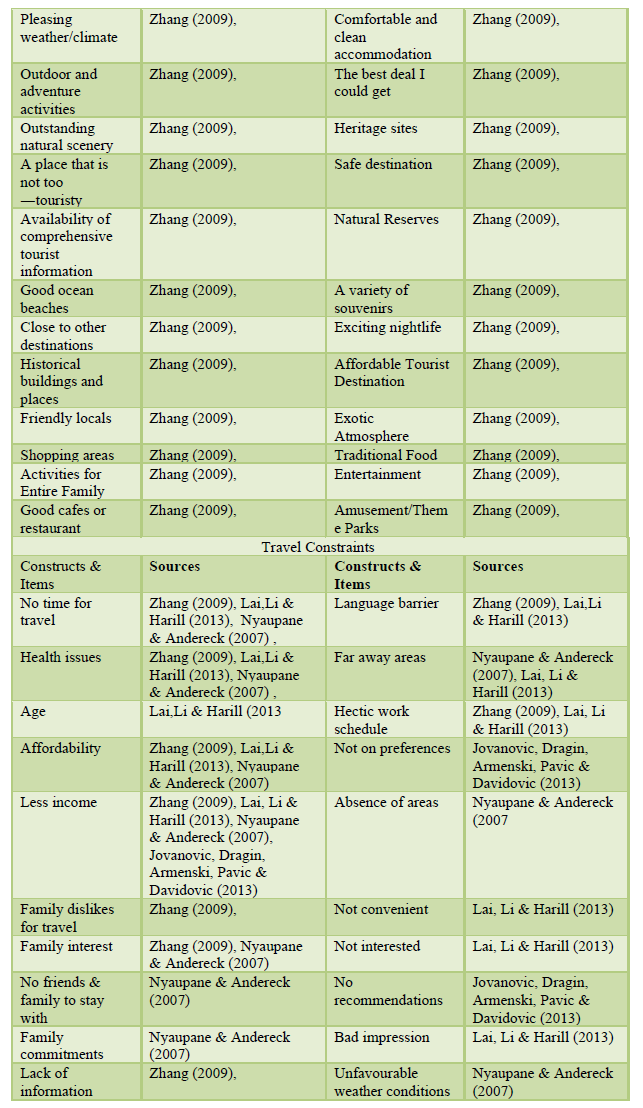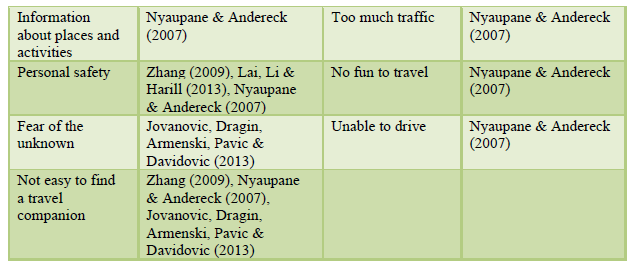INTRODUCTION
A proper instrument of any concept is required in any of the scientific studies. Development of a concept is the first step of any measurement because it represents an idea or reality. Concepts are operationalized through variables. Variables are features of any given concept with a score assigned to it. Most of the variables are not directly observable thus in such a case an instrument needs to be created to measure the variables which estimate the nature of the concept (Marzo, et al., 2016).
Research instrument development needs a systematic approach to be conducted because it is based on measurement. While developing research measures, some things are taken care of as; time is taken in explaining the research design, describing the procedure and improving theoretical framework (Hagan, 2014). A questionnaire is one of the data collection tool widely used in educational and evaluation research. A valid and reliable questionnaire must be developed systematically so that the measurement errors could be reduced. Questionnaires help gather information about attitude, perception, knowledge, facts and opinions of the target respondents. Literature review and reading are required to understand the problem (Radhakrishna, 2007).
Travel motivation and socio-economic factors are interrelated. Tourists' behaviour can usually be predicted by their travel motivation. It is the key driving force behind travel behaviours as it provides clues to why people travel. The clues can be found in many studies (Heung, et al., 2000; Li, et al., 2012; Kim, et al., 2003) where influential motivators have been studied. Motivations are influenced by the socio-economic factors of the tourists which decide their travel-related activities/tripography (Jang et al., 2009).
The problem of the study was to develop a research instrument for assessing residents’ motivation given their socio-economic background. Here the perspective from residents is important in the area of travel motivation because residents are the people who have been living in a particular area since birth or for a long time duration. Residents’ socio-economic background plays an essential role in motivating them for taking up travel. The major components of socio-economic factors are income, education, lifestyle and health that decide their quality of life. Residents with high income get better education and better health owing to their high disposable income whereas the residents with lower income dispose less on these as compared to residents with higher income. Travel activities need some of the disposable income of the residents to avail the travel facilities and services and the trip.
Residents can be motivated for travel by the internal as well as external forces. Theories of Travel Motivation have been developed by many of the authors who have studied the theory on the basis of internal and external motivators. Internal forces have been discussed as push motives and external forces have been termed as pull motives (Dann, 1981; Kim, et al., 2003; Uysal, et al., 2008; Pesonen, et al., 2011; Seebaluck, et al., 2015). Socio economic factors are the push motives as income stimulates people to think about a trip; better health allows to take up travel, and better education helps in making a good decision.
There has been huge emphasis on travel motivation for many decades where travel motivation has been summarized as push motives and pull motives (Cohen, 1972; Dann, 1977; Crompton, 1979), but there is hardly any study that justifies the relationship between socio-economic factors and travel motivation given that the present study is about developing a reliable and valid research instrument for assessing residents’ motivation given their socio-economic background (Figure 1).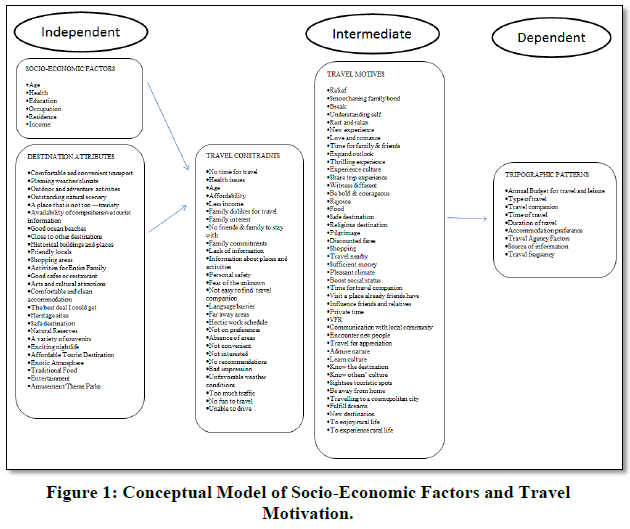
Steps on ‘how to develop a valid and reliable instrument for research’ has been studied. Previous research on ‘Socio-economic factors and residents’ motivation for travel- A conceptual study (Minj & Mishra, 2019)’ has been pursued in this paper as a basis. It presents an overview of the steps and procedures for developing an instrument from previous literature. It gives a three-step process for scale development; (1) Scale Determination (2) Scale Validation and (3) Scale Reliability Test. These have been discussed for assessing the validity and reliability of the instrument being developed in conducting research. Given the above, the study is a sincere attempt to find solutions to the present objective. The article covers first three stages of the process of instrument development shown in table 1 and therefore it concludes by giving a lead for analyzing the contribution of independent factors towards dependent factors as a subject for future research.
OBJECTIVE
The study aims to develop a reliable and valid research instrument for assessing residents’ motivation for travel given their socio-economic background.
METHODS OF THE STUDY
As a research instrument for the study, a questionnaire was developed for the study which consisted of 5 components: socio-economic and demographic information, travel decision and plan/tripography, vacation motives /reasons for travelling, destination and travel features and travel constraints/reasons for not travelling. A total number of 154 items based on the literature on the aforementioned components in the context of travel were identified.
Data collection
The study reported herein used the survey method for data collection with 400 samples drawn from amongst the residents of the study area viz. Ranchi, Hazaribagh and East Singhbhum districts of Jharkhand state, India. Both urban and rural residents were represented in the population. The state known for its indigenous tribal population, was created in the year 2000. The capital city and district Ranchi is also most populous district having total of 2.9 million (8.83% share of the state) while East Singhbhum and Hazaribagh are the other important districts with 2.2 (6.95% share) and 1.7 (5.25% share) million population. In all, these three districts in Jharkhand are considered to be developed districts given their industrialization and socio-economic parameters (Census 2011). These three districts are considered to be most prominent districts of the state from tourism point of view. Ranchi has the international airport that caters to the aviation needs of the entire state. Ranchi, Singhbhum, and Hazaribag are amongst important tourist places of visit for heritage tourism, waterfalls, flora and fauna.
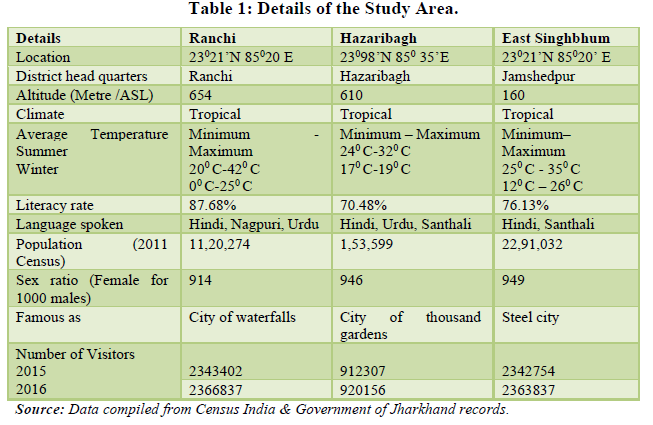
The survey was conducted during the month of June-October, 2019. The criterion of the survey was whether the respondent has ever taken up any trip during his or her lifetime. However, the survey was done only on those residents who fulfilled the criteria to be surveyed. Residents were surveyed from both urban and rural areas. Data were collected from the head of the family or other members in absence of the head of the family.
TRAVEL MOTIVATION CONCEPT
Motivations are forcing that influence and predispose to a specific behavior. In tourism research, perception about the destination is a function of internal motivation and considered ‘push motives and external motivations as ‘pull motives. Each tourist has his or her own internal and external motivations to travel. Travel motivation theories are generally explained on the basis of socio-psychological perspective that is why it has been extensively studied by the researchers of sociology, psychology and anthropology (Cohen, 1972; Dann, 1977; Crompton, 1979). The most applied theory so far is one that was developed by (Maslow, 1970). Travel motivation theories have been developed by different authors at different times which are considered to be monumental in tourism research.
“Need Hierarchy Theory of Motivation” by (Maslow, 1943). Was developed as a pyramid containing five stages; in which physiological needs were as the lower needs which was followed by safety needs, social needs, esteem needs and self-actualization needs. According to him, lower or the basic needs should be fulfilled first.
Travel Motivation Theory of (Gray, 1970). Was another theory of motivation in which two motives for travel were explained as ‘wander-lust’ and ‘Sun-lust’. Wanderlust was described as ‘leaving own known and familiar places to go and see unknown and unfamiliar ones, on the other hand Sun-lust was described as ‘travelling to the places with better facilities and amenities which cannot be availed by the tourists at their own place of residence.
(Cohen, 1972) Divided the tourists on the basis of motivation and their socio-psychological perspectives. Cohen put emphasis on the ideas of ‘strangeness’ which is the first classification of tourists that is organized mass tourists who seek some familiarity at a destination. The tourists who are ‘drifters’, are influenced by familiarity pattern. Classification of tourist by (Plog, 1973). Was also done on the basis of motivation that is arranged from psycho-centric to allo-centric.
Theory of Motivation of (Dann, 1977). Was established on the investigation of two factors namely anomie and ego-enhancement. Anomie is the desire to escape and be away from daily hustles whereas ego-enhancement is the attainment of prestige and status by travelling. Only Dann argued the question ‘what make people travel’ can be answered only through push factors.
Push and pull theory of motivation by (Crompton, 1979). Identified socio-psychological motivation at different levels. The first level of socio-psychological motivation is related to the travel decisions taken before a trip and second level is with the selection of a destination. Push factors are the internal factors that arise from within of an individual and drives for travelling on the other hand pull factors are the external factors that attract an individual towards a destination.
(Pearce, 1982) tried to modify the model developed by Maslow’s Need Theory of Motivation. Travel Career Ladder (TCL) is a five-step model in which biological needs are followed by safety needs, relationship needs, self-esteem and development needs, fulfillment needs. The TCL model was later modified as Travel Career Pattern (TCP) which is a three-layer model. The core layer represents motives like escaping, social interaction, health and physical relaxation etc.; layer 2 surrounds the motivations of core layer and it deals with guest-host interaction and self-actualization and layer 3 is the outer layer that deals with the less important motives like social status and recollection (nostalgia). (Mannel & Iso-Ahola, 1987). Also identified two-dimensional model for motivation that is based on socio-psychological perspective. The theory is based on the personal and interpersonal escaping for seeking personal and interpersonal rewards.
(Mctosh & Goeldner 1995) developed another theory of motivation in which the motivators were classified into four: First, the physical motivators concerned with health and physical well-being of people, second, interpersonal motivators concerned with escaping from one’s hustle and bustle of life, third, cultural motivators concerned with culture and lifestyle of different people at different destinations and fourth, status and prestige motivators concerned with respect, status and personal development of an individual.
(Diep, et al. 2020) identified intrinsic motives of food tourists and adopted push-pull motivation framework and extracted three push factors i.e., ‘taste of food’ as the key consideration for the travelers, ‘socialization’ as interpersonal motivator and ‘cultural experiences’ as a key motivator for the food tourists. Pull dimensions include ‘food tourism appeals’ as a main feature concerning fairs, festivals, events, trails, tours on food. Destination attributes concerning cultural attractiveness were in the dimension named ‘destination appeals. Similarly (Wen et al., 2020) proposed three clusters of tourists who consume cannabis namely ‘enthusiasts’, ‘diversionists/recreationists’ and ‘the curious. Expansion in tourism market in China has resulted increase in consumption of cannabis in outbound tourism market.
The theory of need hierarchy, Gray theory of travel motivation, Cohen classification of mass tourists and drifters, Plog classification Psycho/allo-centric tourists, Dann’s two factor travel motivations have all one characteristic in common; the innate psych of individual decision making to undertake travel. The researches on tourism motivation thus by and large have been centered on socio-psychological perspective of individual tourist at micro level. The authors have however didn’t bother to explore the other possible factors influencing their travel decision.
DEVELOPING THE RESEARCH INSTRUMENT
Research instrument development always seeks a systematic approach. The studies in social science having relevance to the present research on travel motivation were reviewed. Researchers have also followed some steps/procedures/process for developing a research instrument (Radhakrishna, 2007). Applied five steps for questionnaire development and testing: "Research background, questionnaire conceptualization, format and data analysis, establishing validity and establishing reliability". For developing a valid and reliable scale (Hinkin, et al., 1997). Gave seven important steps to be followed: “Item generation, content adequacy assessment, questionnaire administration, factor analysis, internal consistency assessment, construct validity and replication” (Burton & Mazerolle, 2011). Used four steps for developing instrument: “Defining constructs and determining domain concepts, generating items for the survey and judging the appropriateness of the item, design and conduct the study to test the scale and finalizing the scale based on data collected in the third step” (Wen, et al. 2020). In his study administered his instrument using a sample of 654 Chinese tourists who consumed cannabis during their vacation in Amsterdam. The study used four-step process to develop a measurement scale that includes ‘initial item generation’, ‘item purification’, ‘measurement scale dimensionality determination’ and ‘measurement scale reliability assessment and construct validation’ (Table 2).
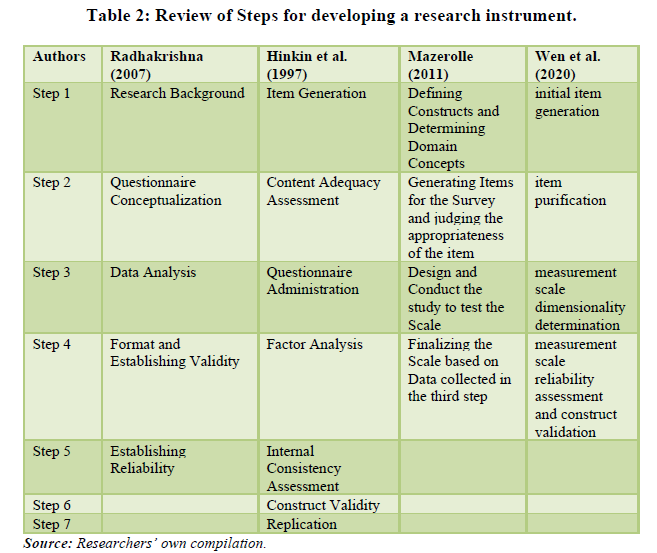
ITEM GENERATION
The process of developing a research instrument begins with “creating items”. It can be done using two approaches: Inductive Approach is implied when an unfamiliar phenomenon is explored and descriptions provided by the experts are content analyzed from which the items are derived. So, the scale is derived when items have been generated (Hinkin, et al., 1997). Deductive Approach, on the other hand, is likely to be suitable where there exists some theory. It requires “an instrument development that could be helped by reviewing the literature and gathering data”. Data and information could be collected from interviewees and local experts. This approach aids in validating the adequacy of the content in developing the final questionnaire. The deductive approach thus starts with defining theories with the help of existing literature and then generate items (Hinkin, et al., 1997). The step is to generate statements or questions by transforming the theoretical framework into statement/questions. A link then between the objectives and contents is established, and major variables are identified and defined (Radhakrishna, 2007).
Review of literature assists in identifying relevant theoretical or conceptual framework. After reviewing the literature, coding of the collected/extracted data is done which the extracted information is grouped into separate categories and then a code is assigned to each section (Onwuegbuzie, et al., 2010). The data, be it quantitative or qualitative goes through several rounds of filtrations until the data reaches beyond the point regarded as necessary. This has to be done to ensure that the tool being used is capable of collecting and analyzing the data (Onwuegbuzie, et al., 2010). A well conceptualized and validated instrument development would help the information to be prominent. Once insured that there is no unwarranted information in the data, the basis of the construct of the behaviour would be established.
The initial phase of instrument development involved an extensive review of existing literature from academia to explore how other researchers have defined and examined Travel Motivation and Socio-economic factors. First, the theories related to travel motivation was defined using the existing literature and then the construct of travel motivation and socio-economic factors were conceptualized. Socio-economic factors were explored by reviewing literature from the interdisciplinary aspect. Travel Motivation was reviewed from different literature for generating items to develop an instrument (Limtanakool, et al., 2006; Lai, et al., 2013, Nyaupane & Andereck, 2007; Heung, 2001; Zhang, 2009; Puad, et al., 2010; Gerdtham & Johannesson, 1997; Jovanovic, et al., 2013; Kumar & Mishra, 2015). It helped in identifying the framework for developing the instrument. Only those items were extracted that matched the objectives of the study.
After the establishment of all required behaviours, one should start writing the items. In quantitative instrument development, the items have to be assisted with open-ended questions which would further help to get the responses on the quality of the items in the questionnaire and allow them in suggesting for some improvement or correction (Onwuegbuzie, et al., 2010). However, in the present research open-ended questions were avoided owing to the difficulty of summarizing the data with the quantitative figures.
If the suggestions made by respondents indicate that the questionnaire is incomplete; in such a case re-identification and re-conceptualization of the construction of the behaviour is a must, which could be done by collecting some more data from the respondents (Onwuegbuzie, et al., 2010).
Just to ensure whether items of the scale are properly constructed, some instructions have to be followed. Language has to be well known to the respondent and it should be interpreted in such a way that the respondents must not face problems so that the meaningful responses could be obtained. The expression of the items has to be simplified and short. Only one issue has to be addressed at a time through the items. All items should be arranged in a sequence one. Items for assessing behaviour should not be mixed up with the items assessing the results of the behaviour. Extra attention should be paid while re-phrasing anything negatively (Hinkin, et al., 1997). Content redundancies are the underlying basis for assessing the internal consistency thus it is essential when multiple items are created.
There is no hard and fast rule for the number of items to be kept. A measure that optimally assesses the area of interest and maintains internal consistency with the least number of items is preferred. The biasness caused by boredom could be minimized by keeping the measure as short as possible. To achieve internal consistency in adequate quantity, four or five items per scale should be developed. Addition of more items to the scale requires more time for developing and administering a scale. Most constructs demand a scale comprised of four to five items. While generating items it is necessary to generate double because only some of the new items may be kept in the final scale. Once the scale development is done, it is to be pre-tested to get the content adequacy.
After the pre-test, the questionnaire is all prepared to establish validity by doing a field test and taking suggestions from the experts. There occurs some error in the measurement and the amount of error is validity (Radhakrishna, 2007). Validity and Reliability are important items (entity) for developing an instrument (Burton& Mazerolle, 2011).
The selection of items was drawn based on the objectives of the study. A rough draft of the questionnaire was made initially. A questionnaire consisting of close-ended items was presented before the expert for modification and approval. Subsequently the same was presented in a classroom of forty MBA graduates. After discussing with the experts and the suggestions made by them, the final draft was prepared. In Part -1, five questions were included: ‘Average age of the household’, ‘Is anyone from your family suffering from any chronic disease? Yes/No, If ‘yes’ please mention the number of members suffering from it.’, ‘Educational qualification of the family members’, ‘Total number of members earning in the family’ and ‘Job connected to tourism’. In Part-2, some additions were made; ‘What is your annual budget for travel and leisure’, ‘When do you plan to travel’, ‘What is your normal duration of travel’, and ‘whether it/What, matters you when you choose a travel agency’. A question was added subsequently; ‘How frequently do you visit tourist destinations?’ Part-3, Part-4 and Part-5 were Likert scale questions thus no changes or additions were made into them.
The items of the questionnaire were divided into five parts: Part-1consists “Socio-economic and demographic information”, Part-2 consists “Your Travel Decision and Plan/Tripography”, Part-3 consists “Vacation Motives/ Reasons for travelling”, Part-4 consists “Destination and Travel Features” and Part-5 consists “Travel Constraints”. Part-3, Part-4 and Part-5 consisted of 5-point Likert scale questions whereas the other questions did not follow the Likert scale given the nature of such item. Part 1 and Part 2 consisted of multiple-choice questions on socio-economic factors and tripographic information respectively.
All items of the questionnaire were written in English for two reasons, one being; the researcher was personally handling the instrument during the survey. There was no inconvenience felt during the survey because of the language of the questionnaire. Second; the respondents were found to be qualified and had no difficulty in answering the questions asked in English. It was then presented before the experts and the suggestions were incorporated in the final draft. Items were reduced because the questionnaire was lengthy which would have caused boredom for the respondents. Some of the items were removed and some were added as required. The instrument contained 154 items and was developed with the help of previous literature on the same domain/area of research. Finally, a 154-item questionnaire was finalized for the pilot survey.
Initially, the review was done to give information about the construct of Travel Motivation. Delphi techniques were followed in clarifying the ideas about how socio-economic factors might be influencing the motives of residents for travel. Delphi is a "multi-stage process" or "collection of opinion" on a particular topic or a research question in which experts' opinion is assembled to get a unanimous perspective where each stage depends on the results of the previous stages. A questionnaire is prepared initially in the first stage which contains idea generation on the issues regarding the topic. A panel of experts is invited for opining on the topic, their opinions are analyzed, the result and the feedback from the previous round are incorporated in the next round. Experts' opinion and feedbacks are recorded and assessed in the subsequent rounds for reaching the consensus. A report is prepared which turns to be "the outcome" of the technique as the opinion of experts. A series of three rounds is adequate (Keeney et al., 2001; Villiers et al., 2005; Yousuf, 2007). Experts’ suggestions helped in giving a basis for developing the scale with extensive literature review on ‘Travel Motivation’ (Table 3).
PILOT TESTING
The developed instrument has to be field-tested so that the appropriateness of the items on the scale could be assessed. It is essential to check the clarity, relevance and length of time required to fill a questionnaire. At this stage, one should focus on the reliability of the content used in the scale and obviously on the validity of the constructs (Onwuegbuzie, et al., 2010).
The finalized questionnaire for the study was pilot tested on a sample of 100 residents from rural as well as urban areas of Ranchi district. It was surveyed from only those residents who had undertaken at least one trip in their life. The respondents were asked to rate the items of Part 3 on Travel Motives and Part 5 on Travel Constraints on a 5-point scale where 5 stands for ‘strongly agree’ and 1 for ‘strongly disagree’. For Part 4 Destination Features, the respondents were asked to rate how important they found each feature of destination on a 5-point Likert scale where 5 stands for ‘extremely important’ and 1 for ‘of no importance’. The schedule was filled by the respondents themselves in the presence of the researcher but the respondents who faced difficulty filling the schedule were helped by the researcher.
TEST OF RELIABILITY
Reliability is “the consistency of scores reported by a study participant” (Hagan, 2014). It refers to “consistency or repeatability of a test or measurement” (Burton& Mazerolle, 2011). Reliability testing depends upon the type of measuring instruments being used for assessing the reliability” (Hagan, 2014). Cronbach’s alpha is the most accepted measure for testing the reliability of a scale. Cronbach alpha tells "how well the item measures the same construct” (Hinkin, et al., 1997) (Figure 2).
There exist many types of reliability test which includes: test-retest, internal consistency and scorer reliability (Hagan, 2014). Test-retest is a test to compare the responses of a respondent at different time frames and is temporal stability of a test. Internal consistency refers to the consistency of scores within the instrument to compare the responses against other responses or the interrelations of responses (Drost, 2011). Internal consistency of a scale is calculated once Exploratory Factor Analysis and Confirmatory Factor Analysis have been done (Hinkin, et al., 1997). Cronbach’s coefficient alpha is used to test internal consistency. It is found that the more the items of an instrument, the more consistent it is (Drost, 2011). Once the scores are found to be reliable, that may be generalized to other characteristics and behaviour (Hagan, 2014; Drost, 2011).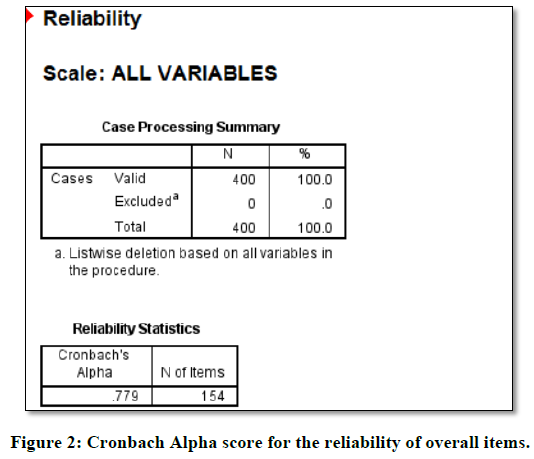
In case of any inconsistency, the same must be checked before the validity of score interpretation is evaluated (Hagan, 2014). The error may occur due to "the variations in performance on different forms of a test". The reliability coefficient is used for evaluation of the reliability and the measures evaluate the differences of respondents in terms of scores and group of respondents (Drost, 2011).
The coefficient alpha value can be between 0 to 1; where 0 indicates that the instrument has got errors whereas 1 indicates that there is no error. The coefficient value of 0.70 and above is considered to be reliable (Hinkin, et al., 1997; Radhakrishna, 2007).
The responses then were entered into SPSS for testing the reliability. The reliability test score of overall items was found to be 0.779, which is considered significant justifying the reliability of the instrument (Field Andy, 2013). Amongst the analyzed dimensions; socio-economic profile and destination attributes are considered to be independent factors, and tripography, travel motivations or constraints are considered to be dependent variables.
CONCLUSION
A systematic approach is required while developing an instrument for research in any field. Scale Determination, and Scale Reliability Test have been used in this paper to summarize the dimensions of socio-economic factors and relational travel motivation or constraints. Amongst the analyzed dimensions; socio-economic profile and destination attributes can be considered independent factors while tripography, travel motivations or constraints can be considered dependent variables (Heung, Qu, & Chu, 2001). The outcomes lead to analyzing the contribution of independent factors towards dependent factors as a subject for future research. The study aimed to develop a conceptual basis for valid and reliable instrument for assessing residents’ travel motivation given their socio-economic background.
The present study summarized the reviews under 154-items. The items drawn from varied literature were grouped under the socio-economic profile, destination attributes, tripographic patterns, travel motives and travel constraints. There are 28 items each under socio-economic dimension and tripographic pattern, 26 items under destination attributes, 45 items under travel motives and 27 items under travel constraints. The due procedure was followed including, scale determination, and scale reliability test. The reliability test (Chronbach’s alpha) score of overall items was found to be 0.822, which is considered significant justifying the reliability of the instrument (Field Andy, 2013). The study leads to validation of the scale through Confirmatory Factor Analysis (CFA), identification and analysis of the contribution of independent factors towards dependent factors through Structural Equation Modeling as a subject for future research.



